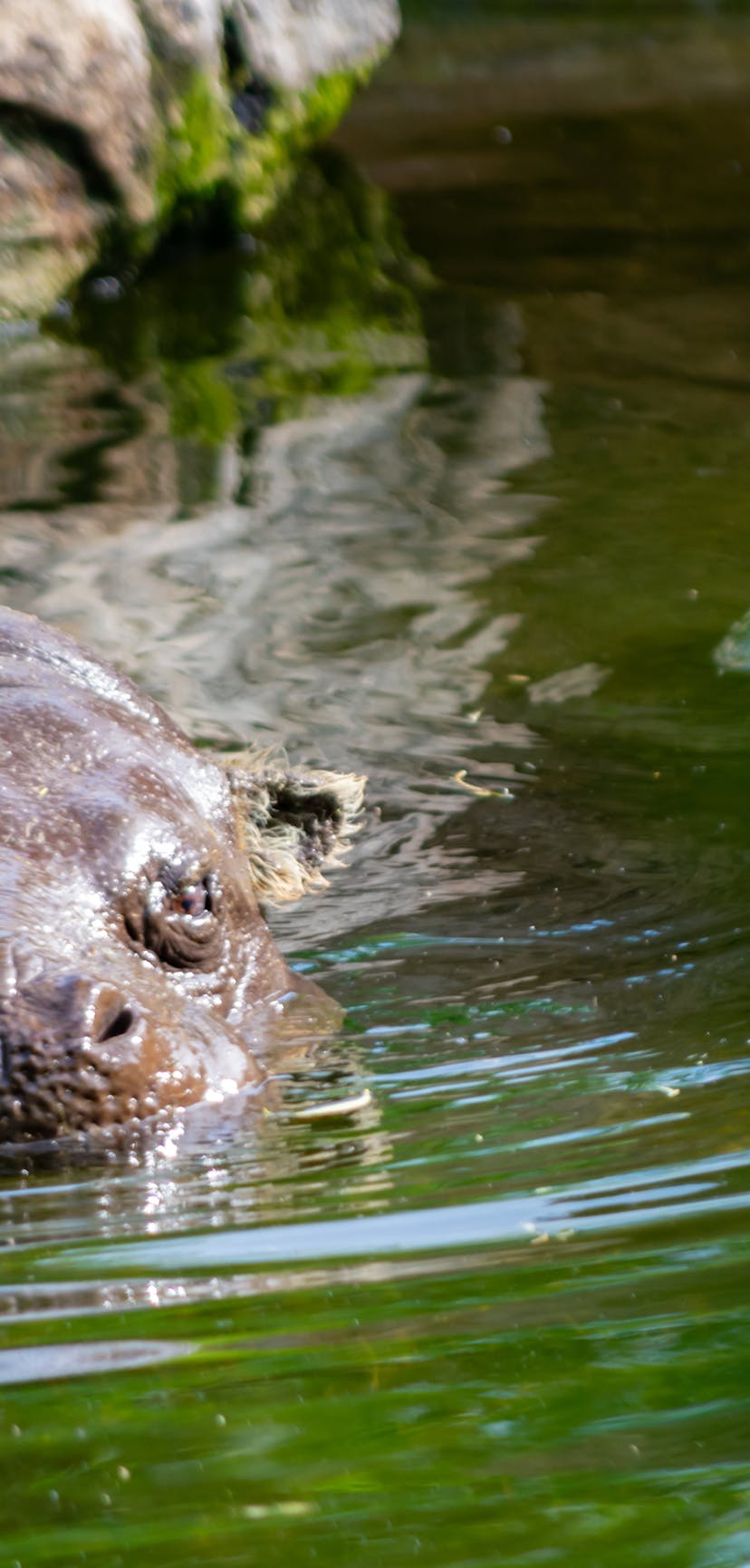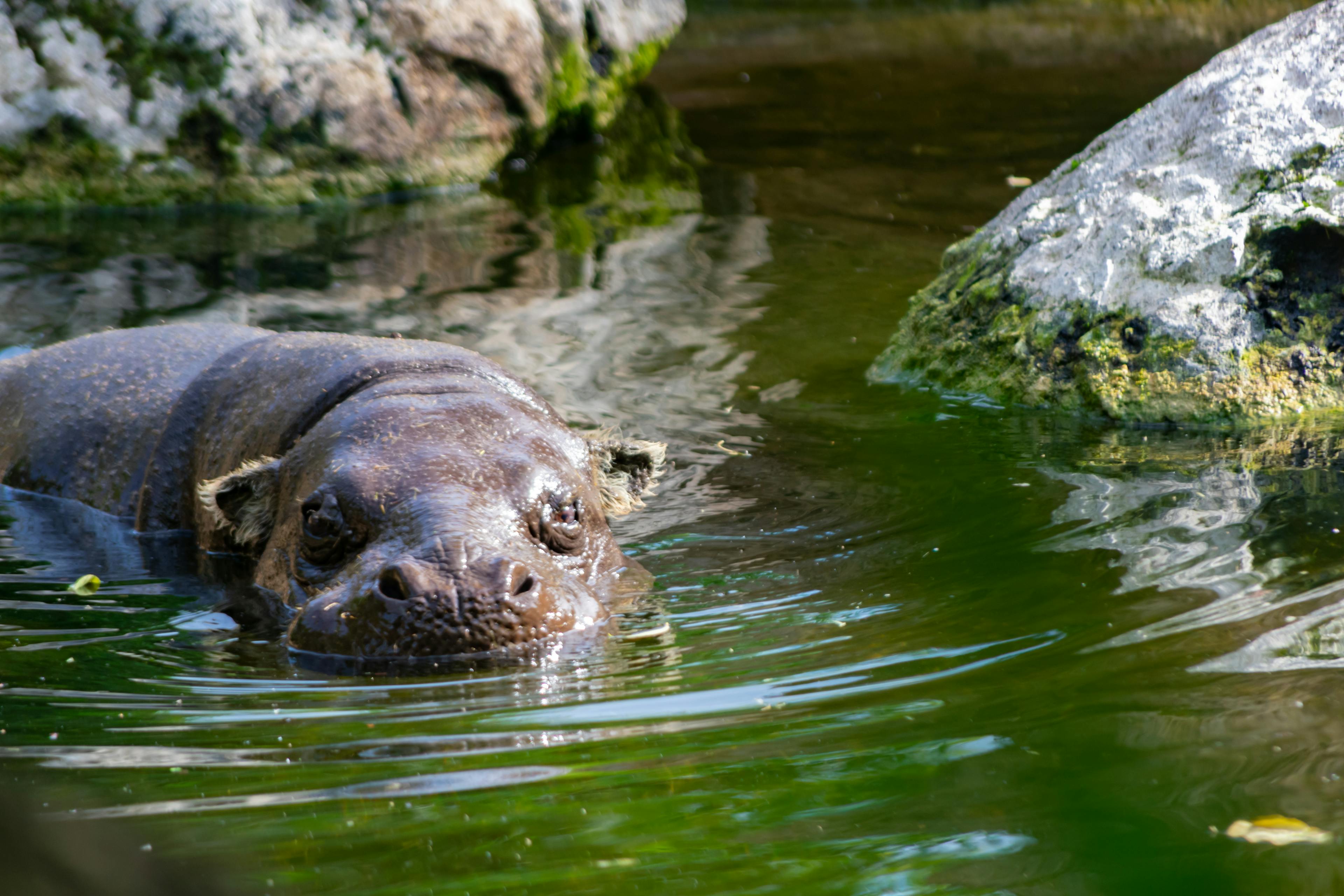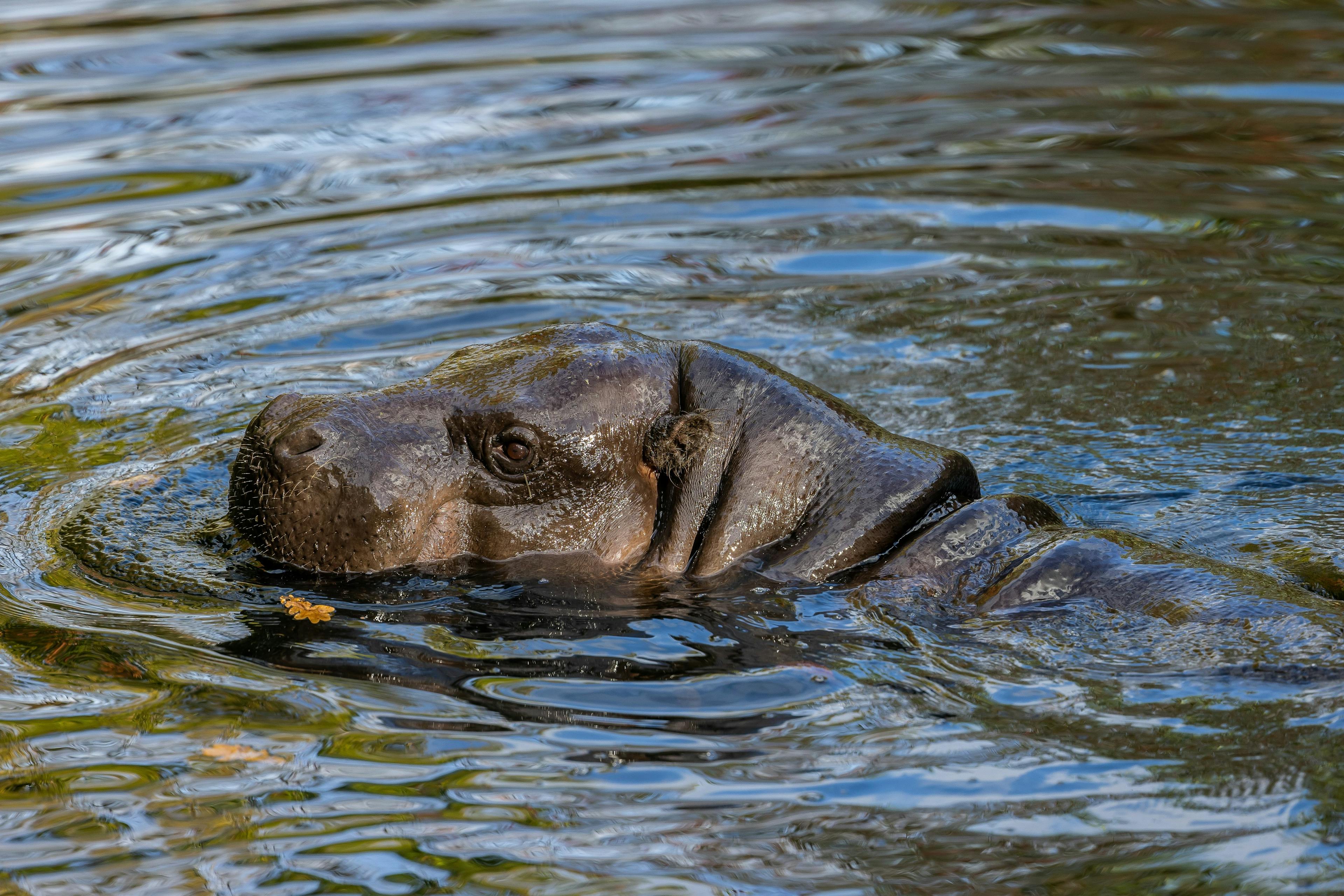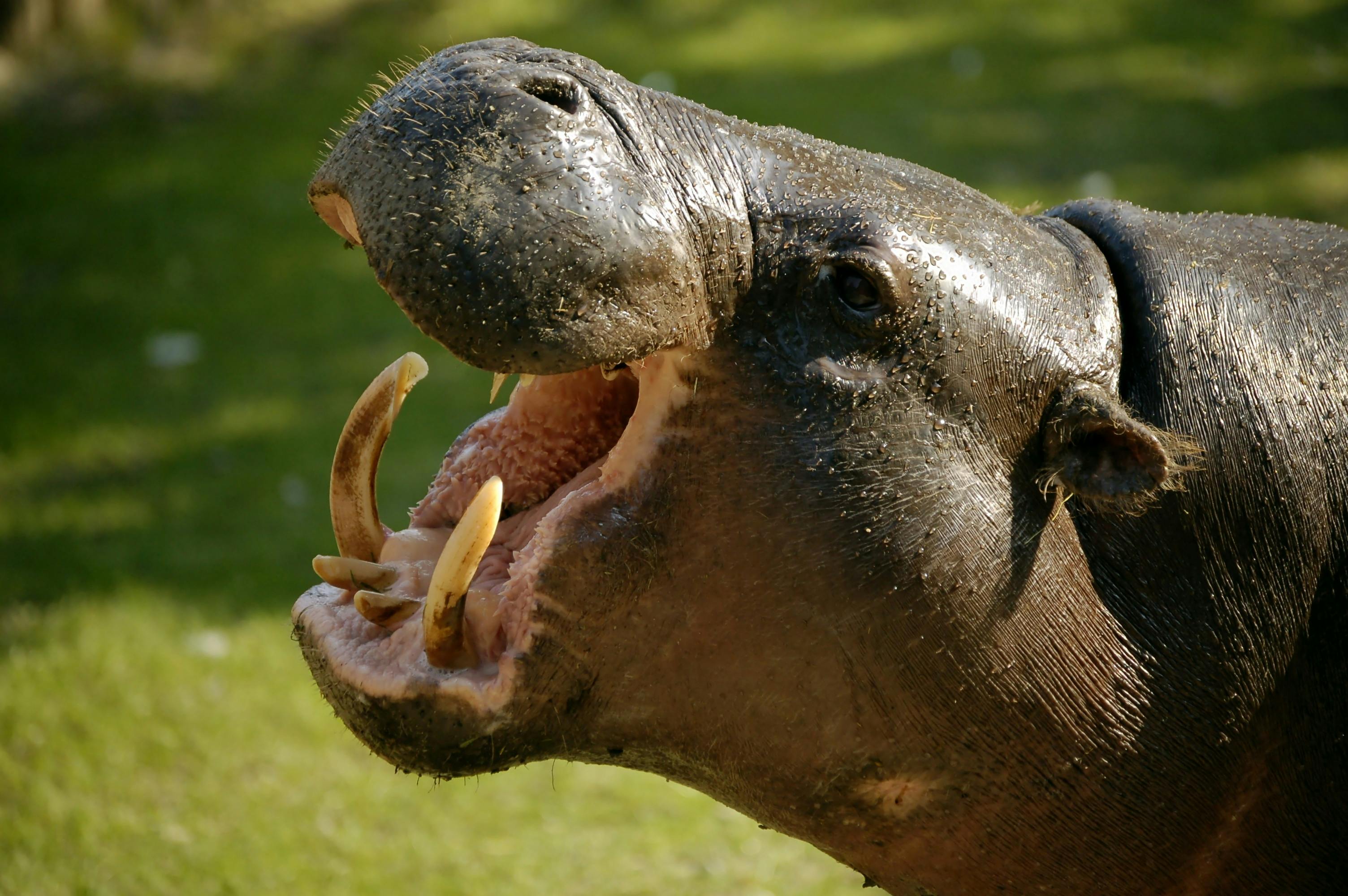Eveline
Eveline came to Blijdorp in September 2013.


The pygmy hippopotamus navigates the dense vegetation of the West African jungle using tunnels and wildlife passages. There, they mark their territory by flicking poop around with their tail. Sadly, the forests these hippos call home are under threat. That's why Blijdorp Zoo contributes to the European population management program and supports scientific research on pygmy hippos in the wild.

about 35 years
Height: 80 cm
lengte: 1,4 meters
160 - 275 kg
Because this species lives in dense forest areas, it's not entirely clear how many pygmy hippos there are currently. To determine this, Blijdorp Zoo collaborates with the IBREAM Foundation. They train sniffer dogs to detect pygmy hippo droppings. These dogs are partly trained at Blijdorp Zoo by first introducing them to the scent of pygmy hippo droppings. Then, the dogs practice by tracking down the pygmy hippos in the zoo based on scent. Once in Ivory Coast, the sniffer dogs locate droppings and footprints. At these spots, IBREAM researchers set up camera traps. These traps help count the number of pygmy hippos in those areas.

Pygmy hippos play a vital role for other plants and animals in West African national parks. Their diet is quite varied, and they don't digest most of the fruits they consume well. By excreting undigested seeds, they help spread and fertilize many types of fruits and seeds. This is crucial for many other animal species that rely on a diverse range of plant species. A species that indirectly protects other species through its lifestyle and conservation is often called an "umbrella species."

The number of pygmy hippos in the wild is continuously declining. This decline is due to several factors. The population is directly reduced as humans poach pygmy hippos for their meat. Furthermore, various body parts, such as the skull, legs, and toes, are utilized in traditional African medicine. Their habitat is also shrinking due to the establishment of palm oil, coffee, and rubber plantations, as well as farmlands. Since pigmy hippos come out at night abd live in dense forests, they are hard to spot. Hence, it remains uncertain which regions are most critical for the conservation of this species.
The pygmy hippopotamus is originally from West Africa and can now only be found in Sierra Leone, Liberia, and Ivory Coast. This species was also present in Nigeria in the past, but it hasn't been seen there recently. They primarily thrive in dense rainforests with plenty of water.

Blijdorp Zoo participates in scientific research and also contributes to the population management program for this endangered species. You can find the pygmy hippos in the Africa section, close to the black rhinos and forest buffalos.
Pygmy hippopotamus Eveline lives in Blijdorp Zoo.
Discover the latest news about the pygmy hippopotamus.